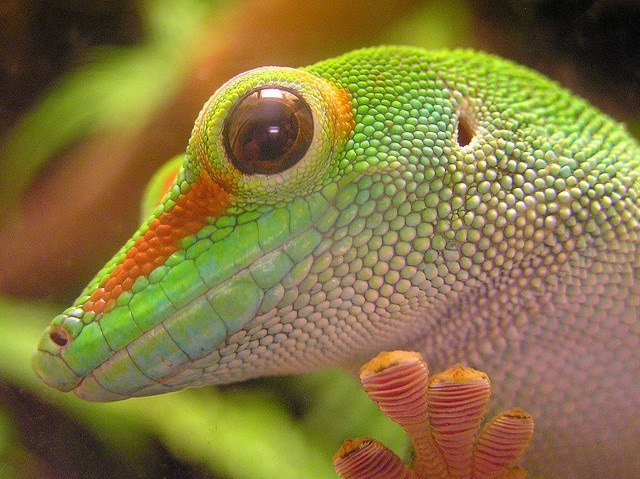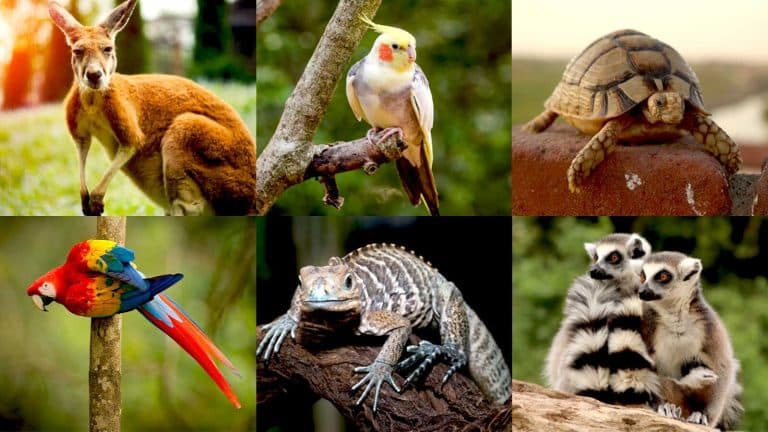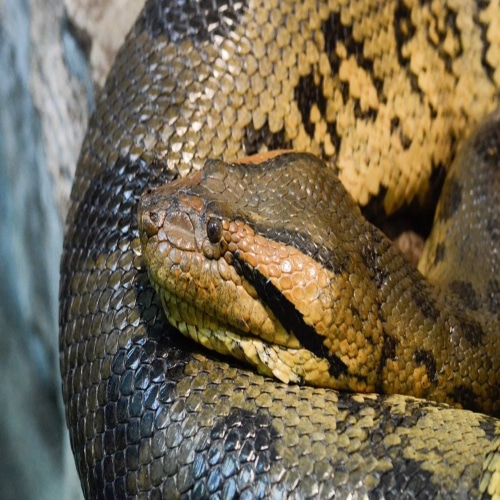Fascinating Facts and Details About Gecko Lizard
Are you planning to bring home gecko lizards and want to know more about their behavior, diet, habitat, and popular species? Gecko lizards are beautiful reptiles known for their leopard-like appearance and perky personalities. They are native to northwest India, Afghanistan, Pakistan, and Iran. These ground-dwelling lizards have fat tails, which serve as reserve storage for fat.
One of their unique abilities is that they can easily stick to slick surfaces and across ceilings. Unlike the other reptiles, they are toothless, and their mouth is lined with soft gums. They are not very social and like to stay in one spot for a long time. You can also keep them as pets as they are easier to look after than other reptiles.
The leopard geckos kept as pets have life spans between ten and twenty years and are under a foot long.
All You Need to Know About Gecko Lizard
Let’s delve into the fascinating world of Gecko Lizards and learn about their different species, characteristics, taxonomy, diet, and habitat.
Interesting Facts About Gecko Lizard
- Geckos are nocturnal species, and their eyes are adapted for nighttime hunting. The sensitivity of the gecko lizard eye has been estimated to be three hundred and fifty times higher than human cone vision. They can even discriminate colors in dim moonlight when nothing is visible to humans.
- Geckos communicate by producing different sounds. They make barks, clicks, chirps, and other sounds to warn away competitors or communicate with fellow geckos. Depending on the situation, geckos make these sounds to attract mates and avoid direct fighting with their enemies.
- Some gecko lizard species do not have legs and share a close resemblance with snakes. These species are called snake or legless lizards and are endemic to New Guinea and Australia. They only have vestigial hind limbs and are known for their excellent hearing abilities.
- One of the unique abilities of gecko lizards is that they can detach their tails to escape predators. When a hungry predator grabs a gecko, its tail gets detached and starts twitching and thrashing about, distracting the predator and providing a way for the gecko to escape.
- The gecko’s tail works as the storehouse of nutrients and fats for the times when they do not get food in an abundant amount. So, you can gauge a gecko’s health by looking at its tail. A well-rounded, plump tail indicates that a gecko leopard gecko is healthy.
- One of the most amazing facts about geckos is that they don’t have eyelids. They keep their eyes moist and clean by licking the transparent membrane covering their eyeball.
Key Differences Between a Lizard and a Gecko
All lizards are not geckos, but all geckos are lizards. Both geckos and lizards share the same classification, but they differ in terms of appearance, climbing ability, vocalization, and lifespan. Let’s take a look at the key differences between them.
|
Gecko |
Lizard |
|
The average length of an adult gecko is 5-8 inches |
The average length of an adult lizard is 8 inch-10 feet |
|
Gecko has a lifespan of 10-15 years |
Lizard has a lifespan of 1-100 years |
|
Geckos live in tropical, warm, and humid environments |
The lizard can live in all types of environment |
|
The average weight of an adult gecko is 2-3 ounces |
The average weight of an adult lizard is 02 ounces- 330 pounds |
|
Geckos can produce different kinds of sounds |
Most lizards are not very vocal |
|
Geckos can climb vertically |
Lizards can’t climb vertically |
|
Most geckos feed on insects, crickets, cockroaches, moths, beetles, butterflies and mosquitoes |
Lizards have a diverse diet, and they eat vegetation, fruits, small tetrapods, and insects |
|
Geckos have no eyelids, sticky toes, and feet and are mostly brightly patterned and colored |
Lizards have eyelids and vary in pattern and color, but mostly they are found in grays and browns |
Most Commonly Found Pet Gecko Species
1. Leopard Geckos
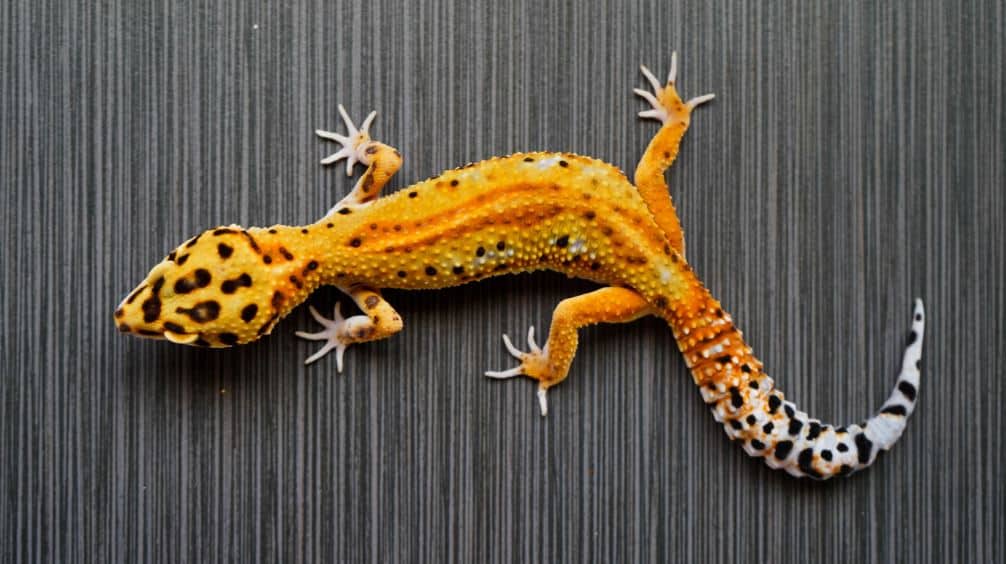
Gecko lizard makes an excellent pet as it doesn’t require huge enclosures to stay happy. Its body is tannish-yellow with brown and black spots. The unique thing about this gecko leopard gecko species is that it doesn’t have rounded toe pads like other geckos. Gecko leopard gecko eats insects like grubworms and crickets.
2. Frog Eyed Geckos
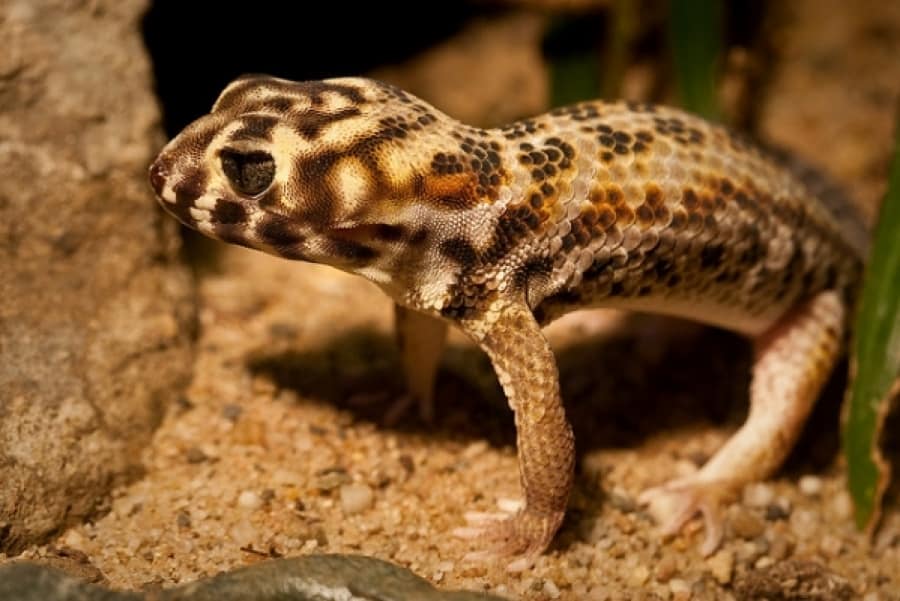
Frog-eyed geckos have a noticeable round head and large, bulbous eyes. These ground-dwelling lizards are the favorite of collectors. They need very little care and eat any insect you provide. Give them a healthy diet of insects and desert-style enclosures, and they will stay happy.
3. Gargoyle Geckos
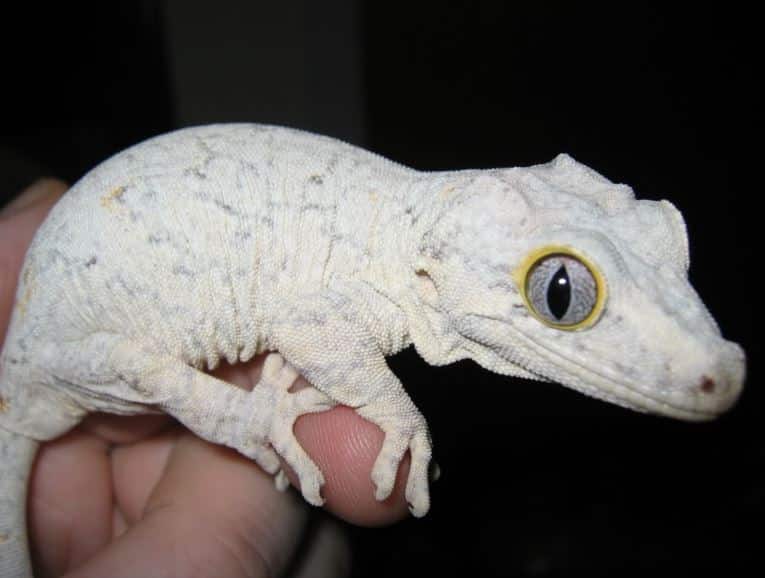
These interesting creatures most commonly have brown bodies but also come in different colors, like yellow and pink. They have an easygoing nature and are 7-9 inches in length. They are hardy reptiles and do not need extensive care. You can keep a single gargoyle gecko even in a ten-gallon tank. These reptiles don’t require an ultra-warm environment, so you don’t need to provide supplemental heating or lighting to them.
4. Tokay Geckos
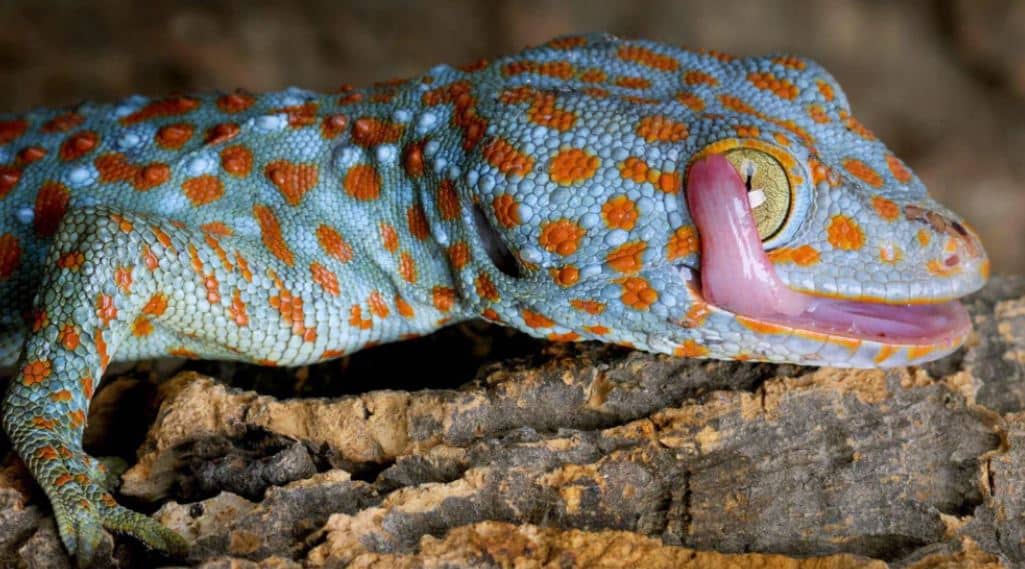
Covered in vibrant colors and gorgeous orange spots, Tokay Geckos are adorable creatures. These reptiles can be the best choice for intermediate-level pet owners as they are a bit aggressive. They often get into fights with other male members and bite each other with their painful teeth.
5. Lined Leaf-Tailed Gecko
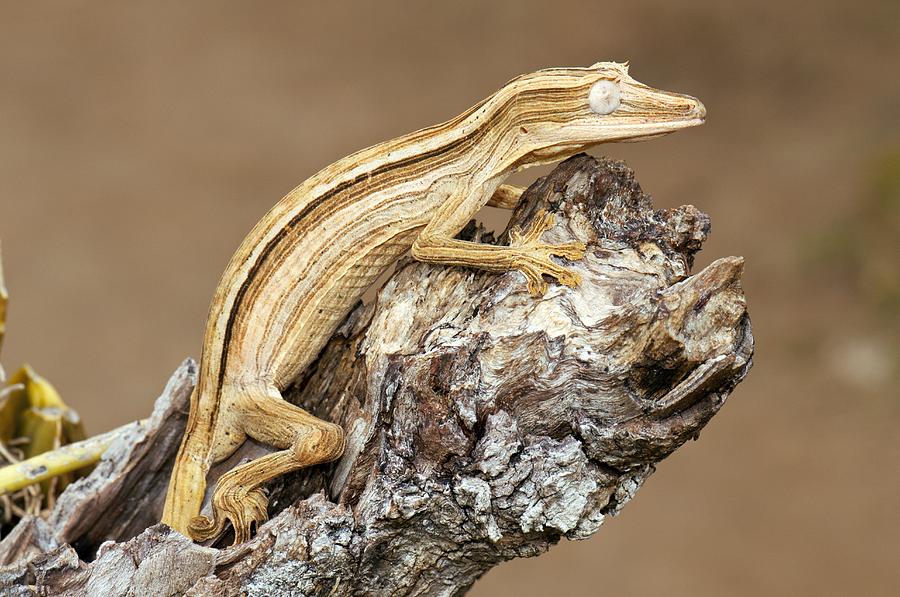
These geckos can camouflage in trees when they remain still. Their head is triangular, and they exhibit horn-like protrusions around their eyes. They are the most affordable pet reptiles on the market. But they look a bit scary due to their thorny heads.
6. Satanic Leaf-Tailed Gecko
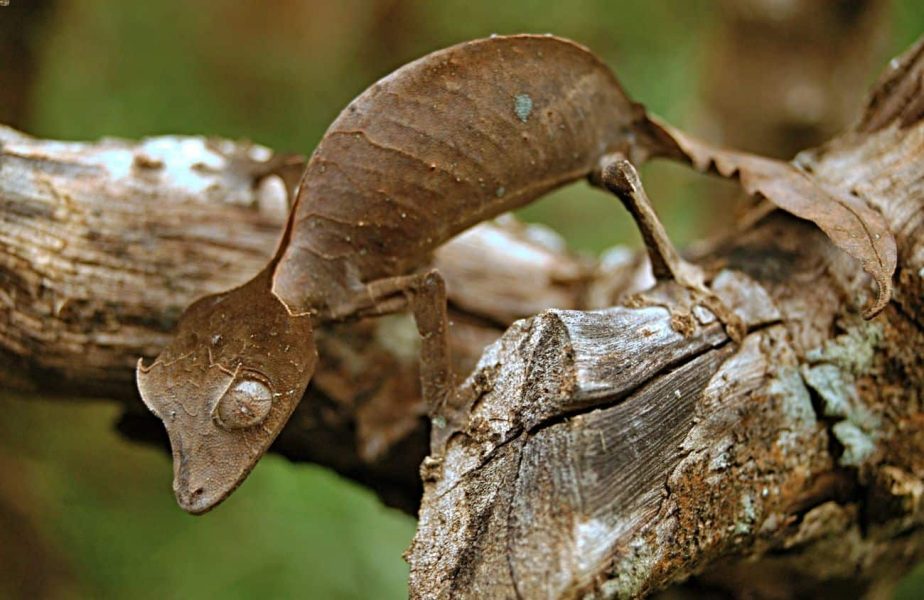
This gecko species is native to Madagascar. They can camouflage to hide from their enemies. They can take the color of the surroundings to ensure that their enemy doesn’t detect them. This adorable creature is the favorite of reptile lovers because of its shy demeanor and unique appearance. However, this gecko lizard species has specific husbandry requirements, which are ideal for advanced reptile owners.
7. Giant Day Geckos
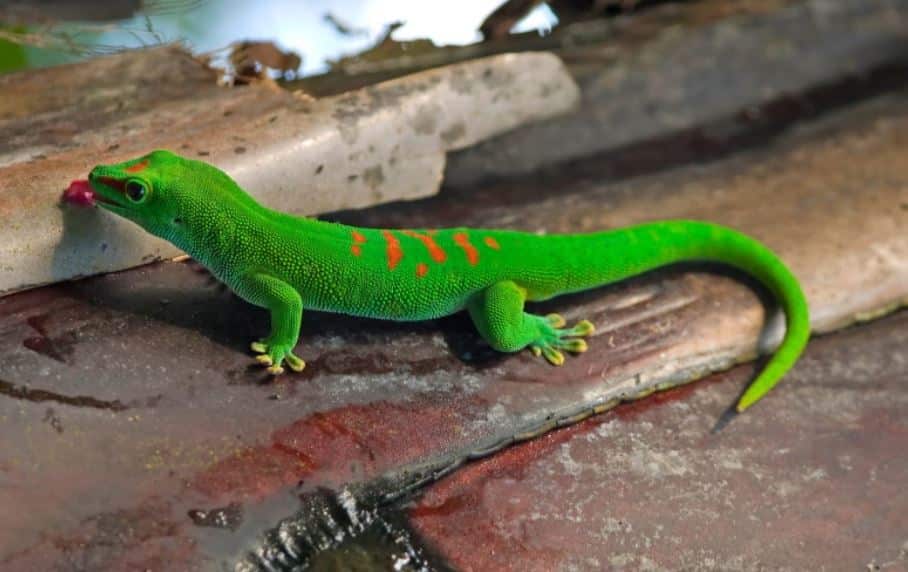
This brightly colored reptile is very friendly and well-behaved. When fully grown, they measure about twelve inches long. They can run very fast and only allow their owners to handle them. Unlike the other geckos, they need large enclosures to stay happy. When threatened, they allow their soft skin to slough off.
8. Crested Gecko
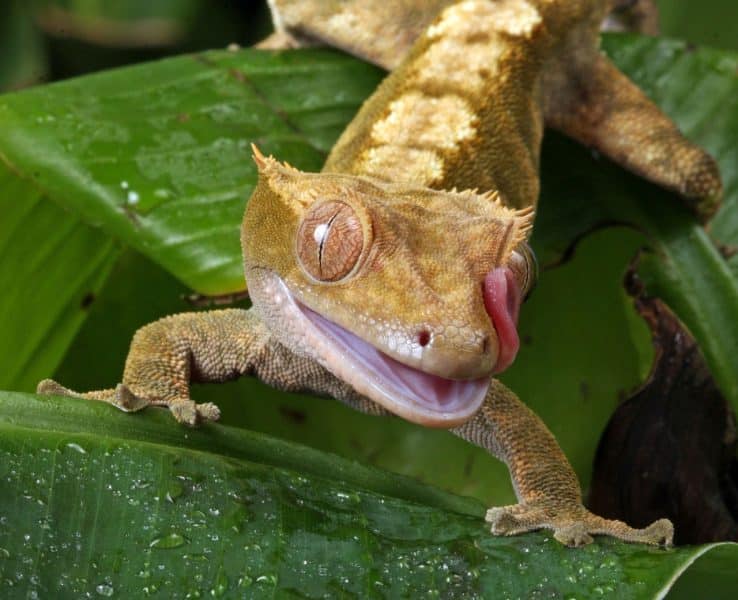
Crested Gecko can be the ideal pet for first-timers as it requires very little care. These little geckos are in different colors ranging from red to orange, beige, yellow, and red. They are gentle and like to hang out on their owner’s arm. They mainly eat fruits, waxworms, cricket, and loaded mealworms.
How to Care for Geckos as Beginners
If you’re a new gecko lizard owner, follow these tips to ensure your adorable reptile stays happy.
- The care requirement of geckos will vary depending on the species you select. When choosing the Gecko leopard gecko, look at their tail to know their health status. The more plump and fat their tail is, the healthier they are. Also, acquire a gecko only from a reputable breeder; otherwise, you won’t know what diseases it might have.
- Keep geckos in enclosures with a hiding place, water bowl, branches for climbing, and secure lids. A tight-fitting lid is important as geckos can easily escape through small holes. Since geckos are small reptiles, they only need a 10 or 20-gallon aquarium, but larger species may require more space.
- Ensure that the temperature inside the enclosure is ideal for the species of Gecko lizard you have adopted. Most geckos thrive well in temperatures between 70 and 90 degrees, but some species may require higher temperatures.
- Humidity should be between 70 and 80 percent in a gecko’s enclosure. You can achieve this percentage by misting the enclosure of the gecko lizard regularly with water.
- Most geckos prefer eating insects such as waxworms, superworms, and crickets. Some geckos may eat fruits and require a formulated diet to grow well. Feeding regimens can vary depending on the species of the gecko lizard and their age. Before feeding them, dust calcium powder on them for better nutrition.
- Never make the mistake of grabbing a leopard gecko by its tail, as it will drop off its tail. Never yell at them or drop them. When approaching them, place your hand in the tank close to them and allow them to approach you. Once they get accustomed to your scent, it will be easier to pick them up.
A Detail on Gecko- Habitat, Lifespan, Skin and Teeth
1. Habitat
Geckos are found on all the continents except Antarctica. They thrive well in every habitat, from deserts to rainforests and mountains. In urban areas, they live near light fixtures and within houses. In forests, gecko lizard resides within the lush green trees or even mountains and deserts.
2. Lifespan
The average lifespan of geckos is around 10-15 years. Geckos live longer lives when they don’t need to hunt. So, they can live up to fifteen years in the wild, whereas in captivity, they survive up to twenty years.
3. Skin and Teeth
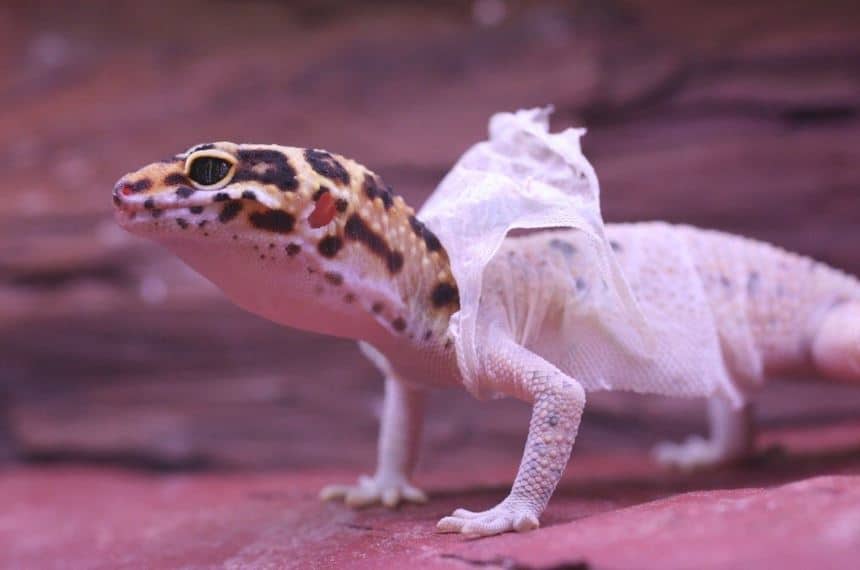
Geckos’ skin is covered with hair-like spines that cause water to bounce off and trap air. These spines also protect them from airborne contaminants. When geckos are not fighting or hunting, they shed their skin using their teeth. Geckos undergo multiple skin-shedding cycles annually. With their teeth, they remove the old skin and eat it because it is packed with tons of nutrients.
Geckos mostly have 50-300 teeth lining their jaw. The shape of their teeth is like small pointed cones. They use their teeth to assist the shedding process and support feeding.
4. Taxonomy and Classification
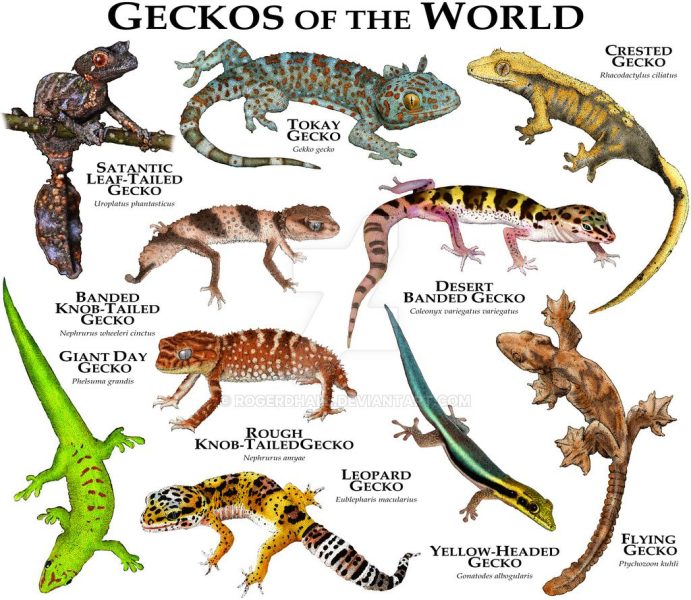
Geckos belong to the “squamate reptiles” taxonomic group, which means scaly. They belong to the taxonomic rank infraorder Gekkota, which comprises around 125 genera of geckos. The infraorder Gekkota comprises seven families: Diplodactylidae, Pygopodidae, Carphodactylidae, Eublepharidae, Phyllodactylidae, Sphaerodactylidae and Gekkonidae.
The Diplodactylidae family comprises 137 gecko species, and Carphodactylidae consists of 30 gecko species. The Pygopodidae family is native to New Guinea and Australia and comprises 35 species, while the Eublepharidae family comprises 30 gecko species. The Sphaerodactylidae family comprises around 200 gecko lizard species, while the Phyllodactylus family has 148 gecko species. Gekkonidae is the most well-known family, comprising more than 950 gecko lizard species.
5. Dietary Requirements of Gecko
The dietary requirements of geckos will differ depending on their species. But most commonly, they prefer eating phoenix worms, silkworms, crickets, dubia roaches, and other live insects. Before feeding insects to your gecko, you should load them with a mix of leafy greens, like romaine lettuce, and endive or commercial gut load products. You should also load their food items with calcium powder 24 hours before you feed them and give them a supplementary vitamin once a week. Powdered supplements like multivitamins and calcium should be dusted on gecko’s food.
In the wild, geckos eat different foods, like the remains of other lizards, various insects, pollen aggregates, fruit juice, berries, and other prey items. In captivity, they can live on premix powder foods and some fresh fruits and live insects.
6. Gecko Safe Handling Tips
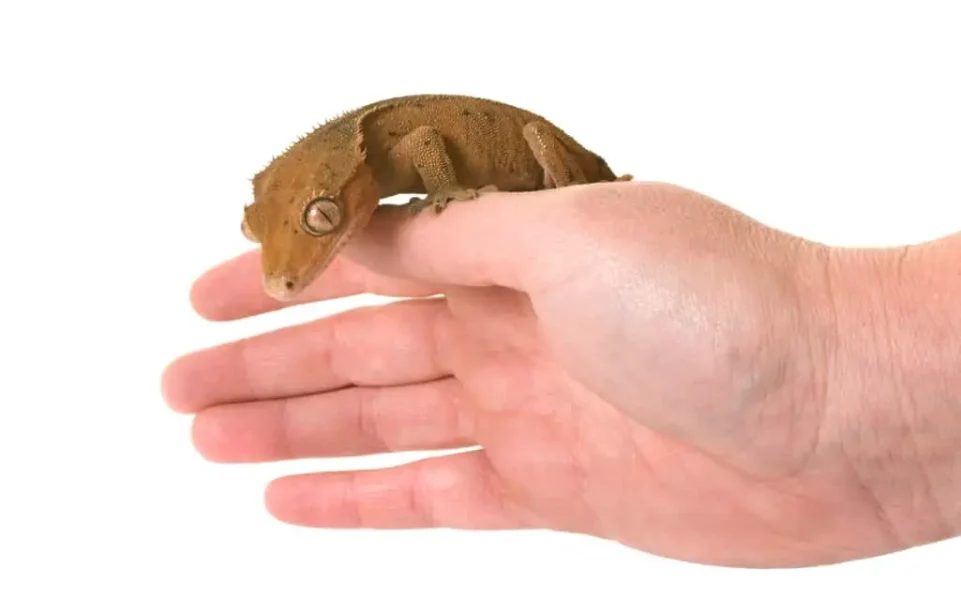
- Gecko lizards can sense hesitation or fear, so approach them calmly. If you want to have geckos as a pet, acquire them when they are young, as they will form an early bond with you and become more friendly with you as they grow.
- If you have just bought a gecko leopard gecko home, give it some time to adjust to the new habitat. While adjusting to the new habitat, it may refuse food, so don’t panic if it does not eat for the first few days.
- Allow your Gecko leopard gecko to get used to you. Put your hand on the enclosure’s floor and allow your gecko to explore. Do this for a few minutes daily. This will help the gecko lizard get used to your hand and will help it understand that it is not a danger or threat. Don’t panic and pull away your hand if your gecko leopard gecko licks you, as it is a normal behavior exhibited by most geckos.
- While picking up your gecko lizard, don’t haste. Support its entire body and ensure that your grip is not too tight. It’s usually recommended to allow the gecko to climb gently onto your hand. Once it settles onto your hand, lift your hand out of the tank.
Lizard Vs Gecko: Which One is a Better Pet
Both lizards and geckos are excellent pets. They also have similar eating patterns and care requirements. So you can bring home any of them, depending on which one fascinates you more. When you bring any of them home, make proper husbandry arrangements and offer them a suitable environment to keep them healthy and happy.
Geckos that Make Great Pets
1. Leopard Gecko
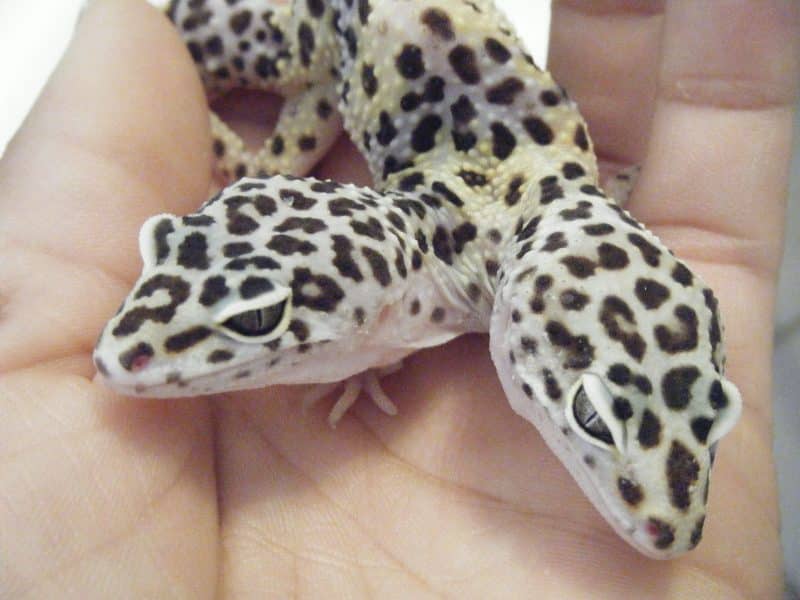
The Leopard Gecko is the most loved pet lizard with minimum care requirements. It is nocturnal and doesn’t climb, unlike the other geckos. The Gecko lizard is docile and can be handled by its keeper easily.
2. Crested Gecko
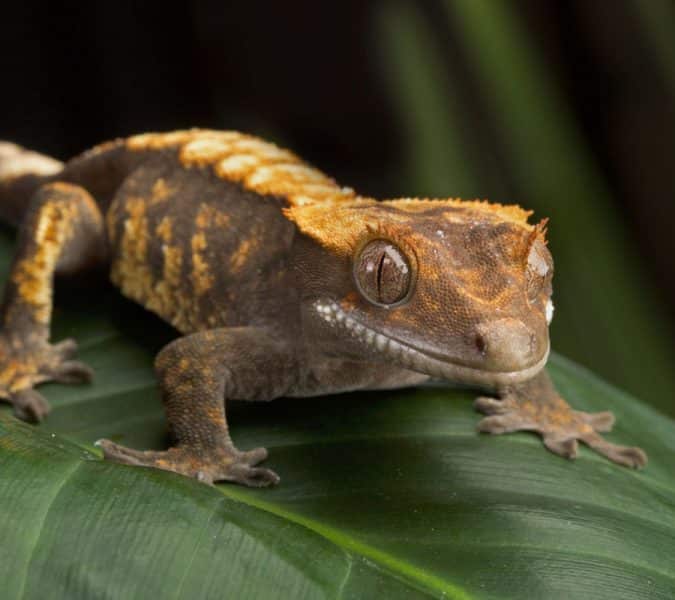
Crested geckos also make adorable pets. They were thought to be extinct but were discovered again in 1994. They can thrive on a commercial diet and require plants with many branches to climb.
3. Day Gecko
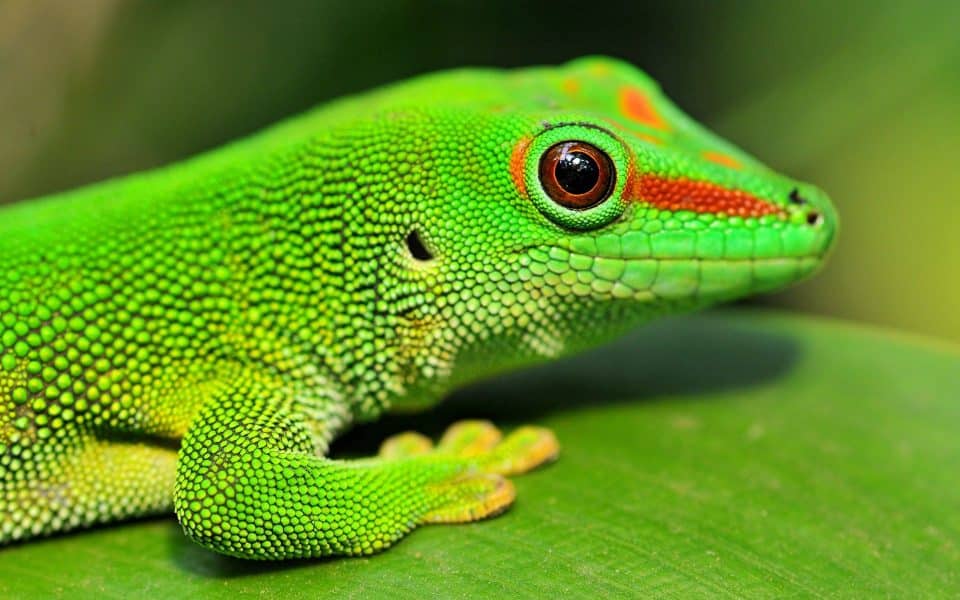
Unlike the other geckos, Phelsuma geckos are diurnal. They need strong UV light to bring out their best colors and absorb calcium. They are easy to breed, and with careful setup and minimal care, they do well in the terrarium.
4. Electric Blue Gecko
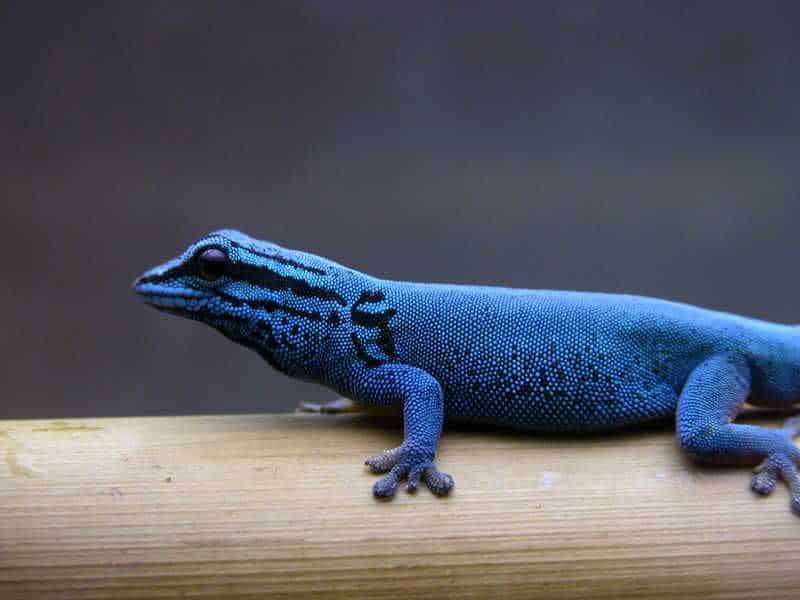
The electric blue gecko remains active during the day and needs a planted, tall tank to thrive well. It eats nectar and live insects. Males are territorial, and you should keep only one in an enclosure. They climb onto the hands of their owner and grab food from them.
Common Gecko Health Issues
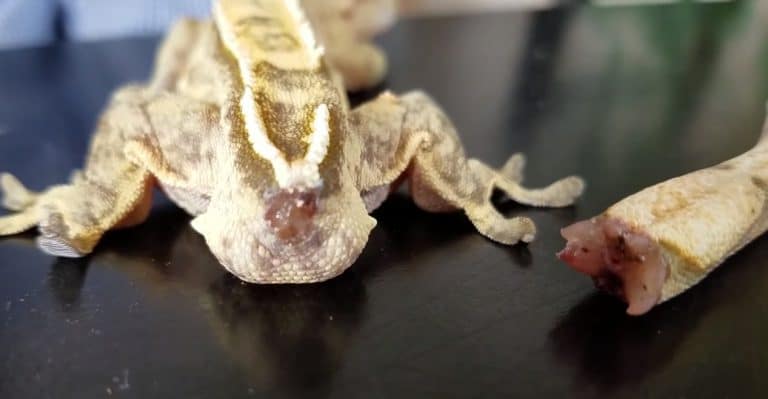
- Some geckos have difficulty shedding their skin because large sheets of shed cling to their limbs, toes, head, or tail. This shed can cause constrictive damage if it is not removed.
- Respiratory issues are also common gecko health problems. These conditions may arise due to extreme temperature fluctuations or inadequate ventilation.
- Digestive issues like loss of appetite, diarrhea, and vomiting are also quite common in geckos due to inappropriate feeding practices, dietary imbalances, or underlying health conditions.
- If the geckos do not receive enough vitamin D3 or Calcium, they may experience bone density loss, resulting in rubbery, soft bones and, eventually, deformities.
- Parasitic infestations can negatively affect the health of a Gecko lizard. Regular veterinary check-ups and proper prevention measures can help treat these common gecko problems.
Conclusion
Geckos are the most loved pet lizards known for their beautiful colorings and quirky personalities. Most geckos are nocturnal, meaning they remain active at night, but a few species are diurnal and nibble on fruits, live insects, and flower nectar. They are mostly docile and bond well with their owners. Their care requirements will vary depending on the species.
But most geckos are small, well-behaved, and readily available, making them ideal pets for experienced and beginner reptile owners. You can check out the care tips, diet, and handling advice mentioned above if you consider bringing a gecko lizard home.
With the help of these tips, your gecko lizard will thrive well and bond well with you.
Frequently Asked Questions
Can You Keep Geckos Together?
Regardless of their gender, it would be best if you never kept geckos together. If you keep geckos together, one gecko will become dominant and try to bully the other one. Geckos also get into nasty fights with each other, so you should keep them separate.
How Long Do Geckos Live?
Leopard Gecko has a lifespan of 10-15 years, depending on the kind of environment and food they get. They live longer in captivity and don’t need to hunt to meet their nutritional requirements.
Are Geckos Dangerous?
No, geckos are not dangerous, making them excellent pets even for beginners. A gecko’s bite can lead to mild to moderate pain. Wild geckos have salmonella bacteria, which could cause diseases.
How Much Do Geckos Cost?
The price of gecko leopard gecko will differ depending on their species. The overall cost of Common house geckos is approximately $10. The starting price of Leopard geckos is $15, and it can go up to thousands.
How Can You Identify the Health and Well-Being of Geckos?
The gecko’s tail is an indication of its health and well-being. The more well-rounded and plump their tail is, the healthier they are.

